General Plant information: Saponaria officinalis, commonly known as soapwort, from the Caryophyllaceae family is a herbaceous perennial native to Central and Southern Europe. It has extended its range and has become naturalized in North America and can be found in fields, roadsides, and alongside streams. It is commonly referred to as a roadside weed due to its weedy and invasive character and it has been listed as a noxious weed in 46 states.
Identifying characteristics:
- Flowers arranged in clusters with each flower consisting of five petals that are light pink or white in color. Petals are curved backward and during the blooming period a floral scent is released.
- Stems are round and hairless.
- The plant has orange rhizomes and it reseeds itself through the rhizomes, often forming colonies.
- Seeds are round, black, and have a bumpy surface.
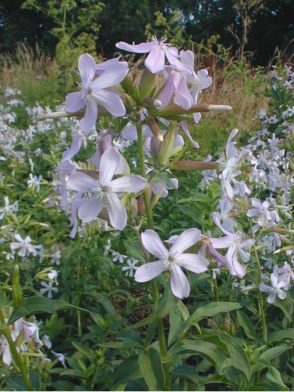
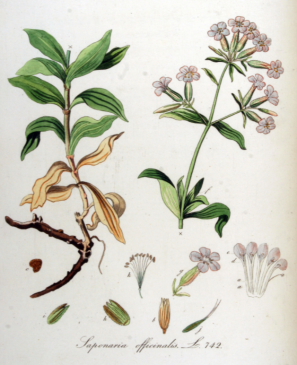
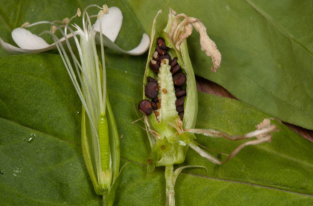
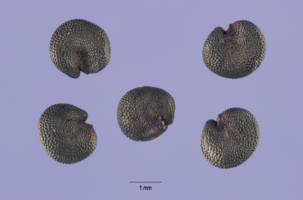
Interesting Fact: The plant is poisonous to some animals and the seeds contain the highest concentration of the toxic material. Additionally, the saponins contained by the plant irritates the digestive tract if eaten.
Traditional Uses:
- This plant has been historically used for a wide range of medicinal and personal care uses by the Romans, French, and Turkish:
- Used as medicine against leprosy, skin ulcers, and other skin conditions.
- Orally employed to enhance milk secretion and as a diuretic, causing increased passing of urine.
- Used as an expectorant, a medicine that aids in the clearance of mucus from the airways and used to treat coughs, bronchitis and other diseases of the respiratory tract.
- Used by the Romans as soap.
- The main parts of the plant used include the rhizomes / roots and the aerial parts to a lesser extent:
- Liquid decoctions prepared from boiling the the roots and leaves were used to soothe the skin and used externally to treat itchy skin.
- Dried rhizomes are ingredients of some commercial cough medicine.
- A soap can be created by boiling the whole plant in water.
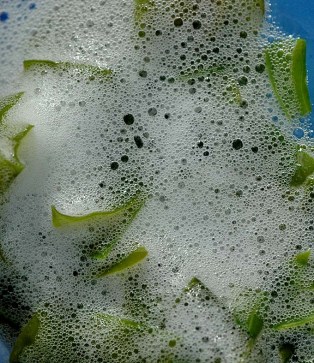
- Important chemicals that are contained in the plant include saponins and quillaic acid:
- All parts are rich in saponins which are naturally occurring glycosides. Saponins have a soap-like quality that produce a foam when mixed with water.
- Benefits of Saponins include: lowering cholesterol levels, improving immune functions, and preventing cancer.
- The main component is quillaic acid but not much research has been done on the benefits or properties of the acid.
- All parts are rich in saponins which are naturally occurring glycosides. Saponins have a soap-like quality that produce a foam when mixed with water.
Current Research:
- Research has focused on new topics such as cholesterol levels, antioxidant and antimicrobial activity as well as cancer related benefits of soapwort. As a result, current research has not focused on supporting the traditional uses of the plant. There is no evidence that supports the traditional uses and that may in part be due to the plants’ toxicity and effect when internally used.
- Activity of saponins, contained in soapwort, and their effect on cholesterol levels is a type of research that is being done on the plant. Since saponins occur in many food plants they have been investigated as well as bile salts since the body uses cholesterol to synthesize bile acids which aid with the digestion of fats. Results showed that saponins control cholesterol and nutrient absorptions and thus saponins could be used to provide nutritional benefits to humans (Sidhu et. al 1986).
- Soapwort has been used to treat various ailments in folk medicine; however, research on the antioxidant and antimicrobial activity of the plant has been largely ignored until now. Recent research is focused on the antioxidant and antimicrobial activity of soapwort and based on the results the aerial parts of soapwort exhibit antibacterial activity (Sengul et. al 2009). Thus this could help support, “the use of the plant extract in natural preservatives in the food and pharmaceutical industries” (Sengul et. al 2009).
- Current research is also focusing on soapwort and saporin-S6, which is a type of ribosome-inactivating protein. Saporin-S6 was isolated from soapwort seeds and has showed to be an immunotoxin and has been used for cancer therapy in clinical trials. Additionally, it has shown to have high enzymatic activity and has maintained good anti-tumor effectiveness in vivo (Polito et. al 2013). Nevertheless, some mild effects have included fever and hepatotoxicity, drug-induced liver damage later leading to liver disease.
Sources:
Polito, L., Bortolotti, M., Mercatelli, D., Battelli, M. G., & Bolognesi, A. 2013. Saporin-S6: A
Useful Tool in Cancer Therapy. Toxins, 5(10), 1698–1722. https://www.ncbi.nlm.nih.gov/pmc/articles/PMC3813907/
Sengul, M., Ercisli, S., Yildiz, H., Gungor, N., Kavaz, A., Cetin, B. 2011. Antioxidant,
Antimicrobial Acitvity and Total Phenolic Content within the Aerial Parts of
Artemisia absinthum, Artemisia santonicum and Saponaria officinalis. Iranian
Journal of Pharmaceutical Research 10(1): 49-56. http://images.biomedsearch.com/24363680/ijpr-10-49.pdf?AWSAccessKeyId=AKIAIBOKHYOLP4MBMRGQ&Expires=1490227200&Signature=L7ucMG1%2FhNXtSe00blazn7AxY7Y%3D
Sidhu, G.S., Oakenfull D.G. 1986. A mechanism for the hypocholesterolaemic activity of
saponins. The Nutrition Society 55(3): 643-649. https://www.ncbi.nlm.nih.gov/pubmed/3676181
https://plants.usda.gov/core/profile?symbol=SAOF4
https://research.vet.upenn.edu/PoisonousPlantsofPA/Saponariaofficinalis/tabid/5481/Default.aspx
http://www.illinoiswildflowers.info/weeds/plants/soapwort.htm
http://www.sciencedirect.com/science/article/pii/S2213422015005351
Picture sources:

